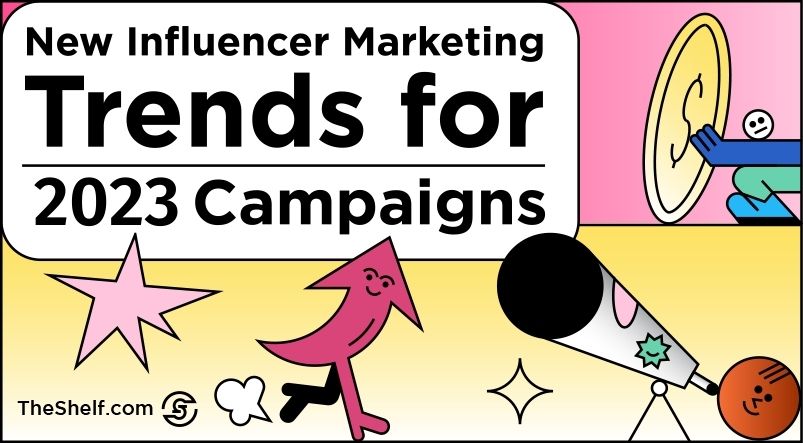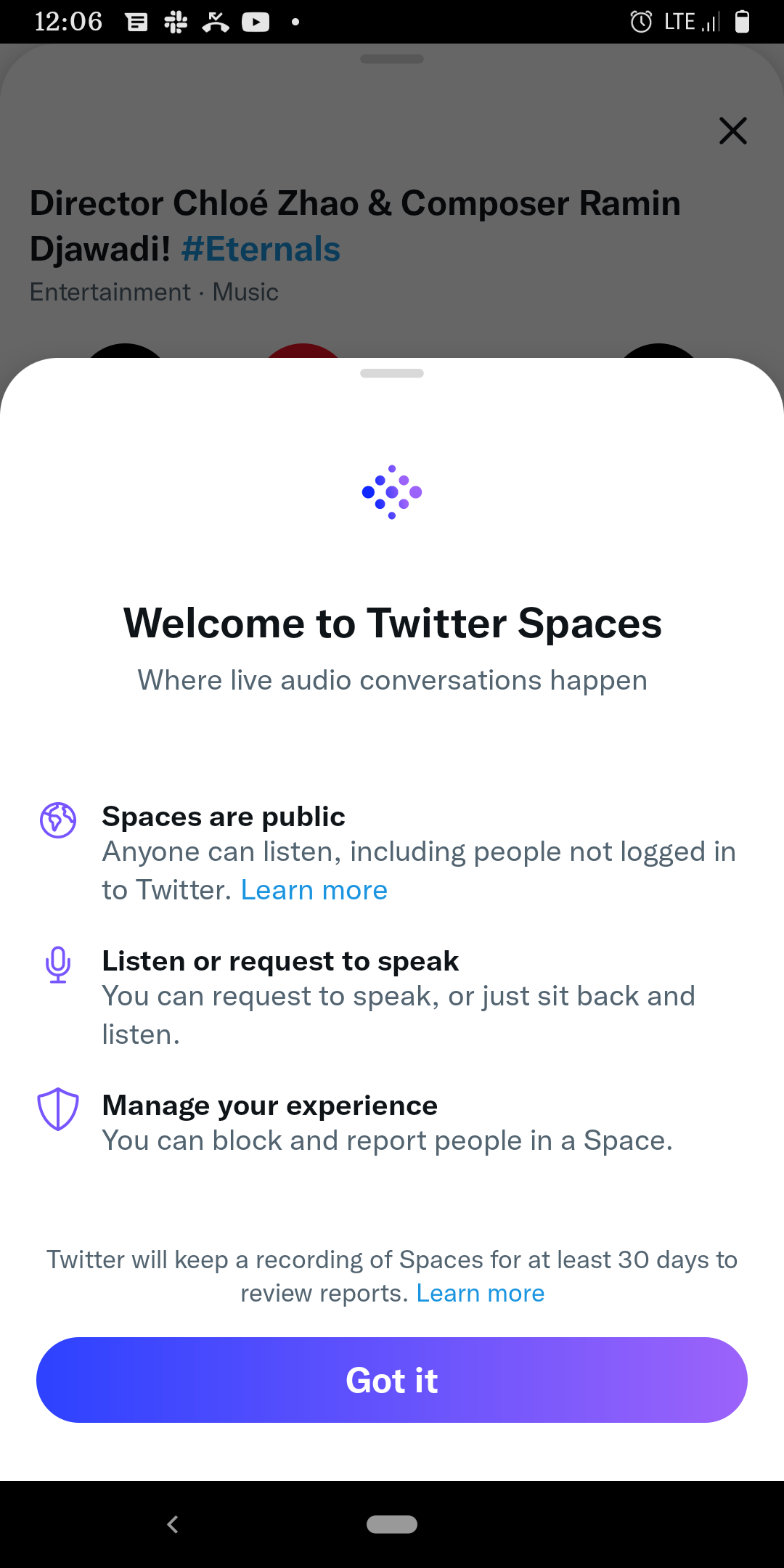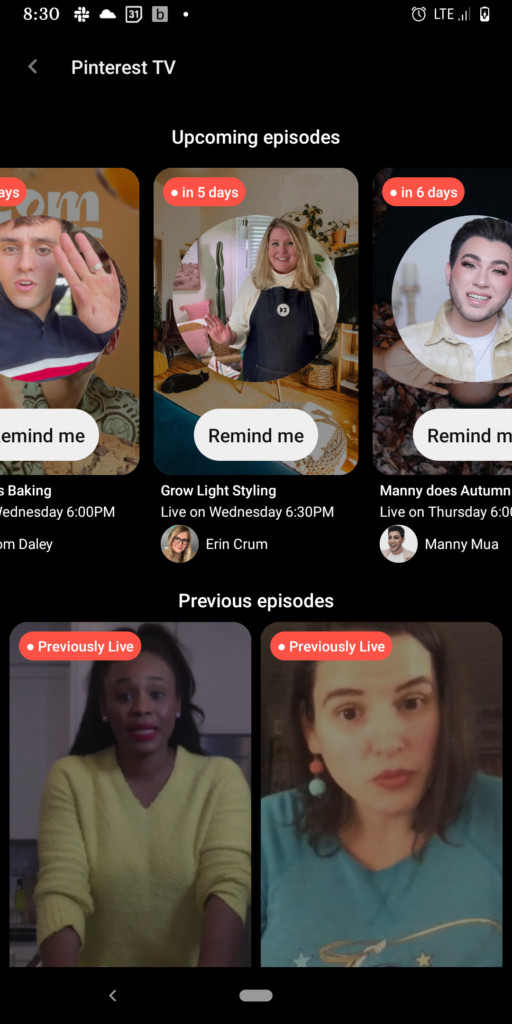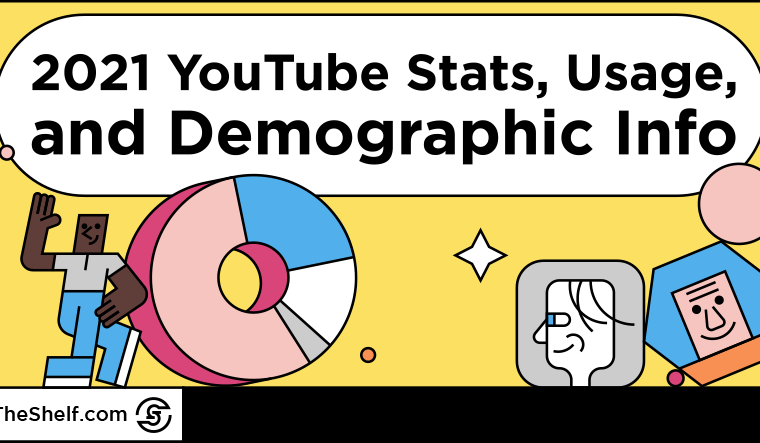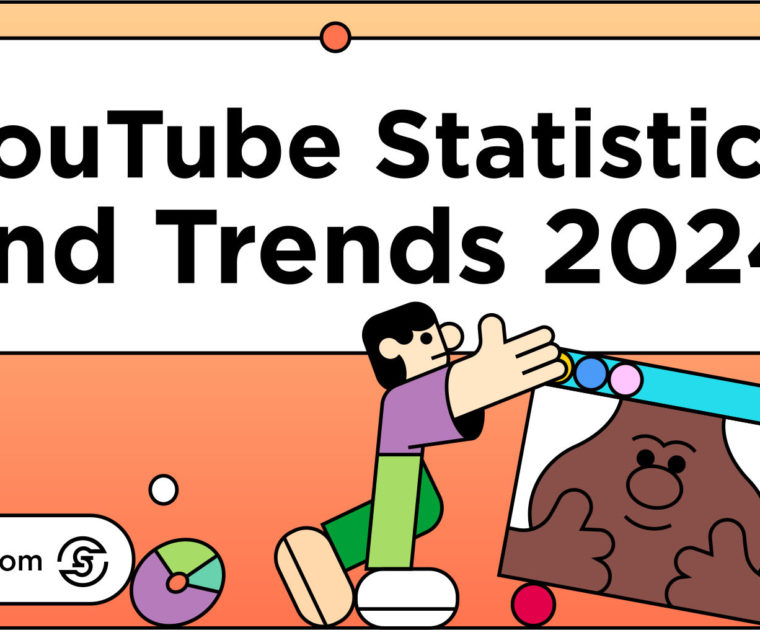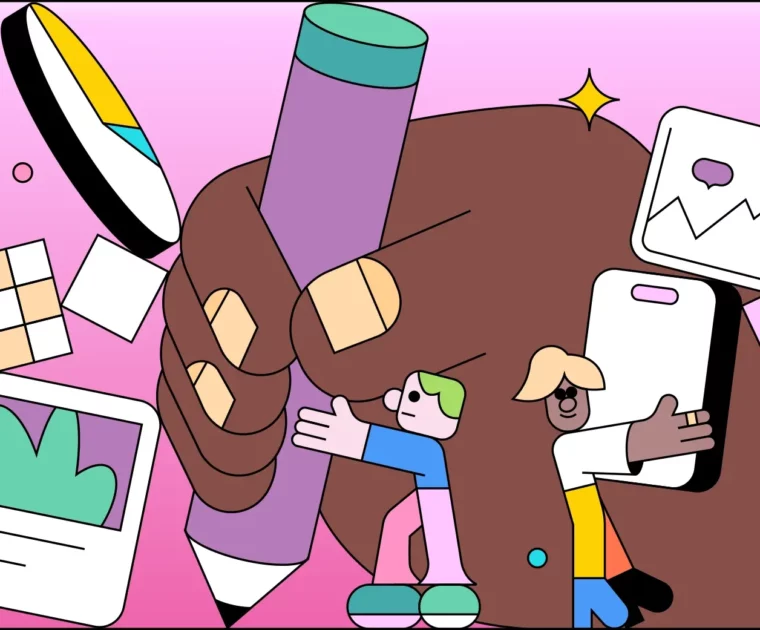Influencer marketing has become an integral part of the digital landscape for many brands. As the influencer marketing industry continues to grow in popularity, utility, and measurability, marketers are allocating more and more of their overall marketing spend to influencer campaigns. But our industry changes fast. Influencer marketing trends emerge, and before you know it, they are established, they mature, and they give way to new marketing trends.
At The Shelf, our creative strategists and content teams document the industry changes that happen in the influencer marketing space on a daily basis. First thing in the morning, we share news, developments, new platform features, and tech news in one of our Slack channels before cataloging those changes in a spreadsheet that we can all access. We know from experience that it’s not easy keeping up with the constant changes.
Why Influencer Marketing Trends for 2023 Matter So Much

The end of the year is always action-packed for brands, marketers, and many influencers. As you focus on rolling out and optimizing your holiday influencer campaigns, you are simultaneously analyzing the results to inform your influencer marketing budget for next year. Even as you zero in on what’s working for you now, it’s super important to keep up to date on changes happening across all the potential marketing channels on which you may post influencer content.
So, we’ve compiled a list of 18 key influencer marketing trends that will impact your 2023 campaigns (and your creative assets, and your influencer marketing budgets, and the contracts, and your ROI).
Let’s talk a bit about some of the features, content, technology, and user tendencies we anticipate will roll out and catch on in the next 18 months. Take a gander, comment below, hit us up on social, whatever. Let us know which influencer marketing trend is kinda your jam right now. These trends definitely have the potential to shape the future of influencer marketing so you don’t want to ignore them.
What Will Influencer Marketing Look Like in 2023? Here Are the Top Influencer Marketing Trends 📈
#1: Audio-first channels will become even more important.
Our first set of influencer marketing trends is all about leveraging those audio-first channels. Last year, we predicted that podcast influencers will crop up in more and more influencer marketing campaigns. #NailedIt
Non-music audio has exploded as a format for consuming content. Notable growth happened during the global pandemic when work commutes vanished for months in 2020. As people flocked to podcasts to find content to keep them entertained and occupied during lockdowns, more influencers and content creators began adding audio as a medium for reaching their own audiences.
Between 2017 and 2021, the percentage of monthly podcast listeners among 12-to-34 years old grew from 27 percent to 49 percent. There are now more weekly podcast listeners than Netflix account holders. And podcast ad spend hit $800 million in 2020 on a sprint to more than double to $1.7 billion by 2024.
Partnering with podcast influencers affords brands the chance to get their name and products in front of well-informed, high-income consumers, 94 percent of whom are active on at least one social media channel, and 54 percent of whom have thought about buying a product they hear promoted on a podcast.
Veritonic, an audio analytics platform, has added brand lift data to audio campaigns to help brands analyze the effectiveness of specific pieces of audio content. Veritonic’s move to build more robust measurement tools will drive tons more brands to create content and roll out partnerships on audio-only platforms.
As it relates to influencer marketing trends, running campaigns on Clubhouse became a common question for us in 2021. But other social media platforms have added audio functionality, too.
With more brands marketing to audio listeners and better analytics tools available, brands will be able to know for sure if sponsoring podcasts with nano influencers delivers better brand awareness results than partnering with micro influencers or other influencers who have larger followings.
#2: Creators are brands.
Any marketer worth their salt already understands something that is downright critical to seeing creator marketing in the right light – influencers are brands. Brands don’t hire influencers as employees; brands partner with influencers.
Last year, we talked a bit about the nuances we expected to see in how influencers negotiated contracts – with a more critical eye, with more confidence about the value they bring. We predicted that establishing those mutually-beneficial influencer partnerships would take more time, require more vigorous influencer outreach, and require a larger investment from brands. Totally true.
In 2023, expect to not only see more influencers position themselves as valuable brands, but we’ll also see brands stand up entire departments devoted to providing their influencer partners with tons of resources, education, and monetization opportunities. Why? Because it’s become evident, especially in the last two years, that though influencers are typically smaller brands than their brand partners, they are well-established brands.
#3: Equality and inclusion are now requisite for campaigns.
In 2020, Diversity, Equity, and Inclusion (DEI) become a conversation brands could no longer avoid having. It was referred to as a Reckoning, which is apropos. DEI is a necessary policy for brands to install and update, not through the lens of quotas and earmarks, but with the understanding that nearly half of Millennials and Gen Zs identify as racial or ethnic minorities. That’s a truth many industry leaders and political leaders in their 60s, 70s, and 80s frequently miss.
Influencers and consumers are analyzing brands to make sure marketing messages, campaign creative, influencer partners, and even a brand’s employees and agencies of record are actively working to create inclusive cultures.
In recent years, brands have been taken to task by influencers who published the fees brands paid them as a way to shine a light on the pay inequalities that happen behind the scenes in the influencer industry. White influencers were consistently paid more for comparable work than Black influencers who had audiences of similar sizes.
Another Instagram-based campaign that served to spark tons of conversation around racial inequality was #ShareTheMicNow in which influencers of color took over the Instagram accounts of well-known White celebrities to reach larger audiences. Pretty epic.
Equality trends in influencer marketing continue to be a hot-button issue and not something we expect to change come 2023. Or ever.

#4: More monetization opportunities for creators
When we initially predicted this back in 2021, this was something a few social platforms were doing. But now monetization (and the features that make content more visible and accounts monetizable) is the carrot social media platforms hang in the faces of creators to get them to come to their platforms and to stay on their platforms.
We thought it would be cool for platforms to start some sort of licensing program for creators, even if it’s just a buck or two, that allows choreographers to be paid for their creations every time someone tags a video with a challenge or dance they created.
This one is all about making sure ALL creators have a chance to reap tangible, financial benefits from their creative endeavors. You’ve probably already heard about the controversy that was sparked when Jimmy Fallon invited White TikToker Addison Rae onto his NBC late-night show to demonstrate all the most popular TikTok dances.
When none of the original creators of the challenges Rae demonstrated on network TV were mentioned or credited during the broadcast, Rae’s appearance sparked a conversation-debate-argument-rage monster around cultural appropriation. The Renegade Challenge, in particular, was the creation of Jalaiah Harmon, an African American teenager from Atlanta.
We like our idea better, but this is a start towards equality in influencer marketing.
#5: Live shopping will become a regular part of social commerce and the influencer marketing.
Since being credited with the creation of the Renegade Challenge, Harmon has partnered with several large brands including Prada, and has been featured in Teen Vogue, The New York Times, Oprah Daily, CNN, ABC, and a host of media outlets that were finally paying attention.
This is an influencer marketing trend we’ve seen really taking hold in recent years. In fact, we’ve created posts around social commerce and content 100% shoppable. Social media platforms are pushing for QVC-styled live shopping experiences. Both Facebook and Instagram rolled out live shopping features this year designed to streamline and boost social commerce.
Amazon and Pinterest offer similar features that allow brands to partner with influencers who are great at creating engaging live streams. This has to be one of our favorite influencer marketing trends, and definitely one with the most immediate impact on influencer marketing campaign ROI.

#6: Using real-time posts and live content as community builders.
Beyond just shopping, consumers are searching for more content in real-time, not just pre-recorded content. We talked about this a bit in our post on YouTube user trends.
Pandemic-fueled lockdowns gave rise to live video content in which viewers were urged to participate in synchronized activities. We’re talking about everything from studying with the Lo-Fi girl to watching concerts to family game nights, and even things like weekly worship services.
Influencers have been going live on YouTube and Facebook for a while. TikTok recently added a new “LIVE” feature that allows users to live stream and interact with their followers’ comments/questions in real-time.
Pinterest TV is still relatively new, but it’s popular among the foodies, gardening lovers, religious circles, and beauty influencers.
Real-time content is one of the biggest influencer marketing trends for 2023 and beyond because it’s something we continue to see picking up steam.
#7: Content creators will add longer versions of micro video content to their arsenal.
TikTok now offers its users to create videos up to 10 minutes in length. This is a huge shift from the 60-second max, quick-tempo speed that brought about the app’s popularity. But longer content allows users to share more in-depth entertainment and add a little depth to their storytelling. This influencer marketing trend continues to move people away from traditional forms of entertainment.
Instagram has already made the switch to longer video content versus photo sharing and short clips, and TikTok now allows users to post videos up to 10 minutes long.
#8: The focus on user experience will extend to social platforms.
We want it all, and we want it all in one place. In 2021, Instagram introduced out-of-the-box features that push the platform toward being a more all-encompassing app.
In August 2021 Insta added an “audio” feature that allows users to search, sample, and save songs to use in future content. Instagram also introduced a map search in September 2021. The map search serves as a business directory that allows users to find different businesses like restaurants, bars, event centers, coffee shops, etc.
When a business is selected, Instagram provides more information about that business such as pricing, hours, products/services, contact information, reviews, and more. The goal is to get users to spend more time on the app, and we totally expect other platforms to follow suit with similar capabilities.
#9: Social commerce will be officially a one-stop shopping channel.
You would be hard-pressed to find a social platform that did not offer shoppable features. Over the past few years, all of the major social platforms have installed social commerce features that create seamless, new shopping experiences for consumers. And it’s pretty cool, too: users get AI-driven personalizations that show them the products they are most likely to buy. products can be tagged in posts, users can snap pics of things they see out in the wild and find similar products on social and visual search platforms… it’s a great time to be a consumer with a smart phone.
According to The 2022 Future Shopper Report from Wunderman Thompson, 53 percent of the consumers polled said they’re planning to spend more social commerce this year, 56 percent said they prefer to be able to buy from brands without ever having to leave the social platform.

These little tweaks make it easier than ever for consumers to find product information and purchase directly from the post.
#10: Consumers will continue to prefer brands with a soul.
Just a little early 2000s vampire humor for you (specifically thinking about Angelus from Buffy the Vampire Slayer and its spinoff, Angel). But for years, consumers have been increasingly picky about how they spend money and who they spend their money with. Nearly 7 in 10 consumers (68 percent) expect brands to be clear and vocal about their values, and 54 percent expect brands to take an active role in conversations around social issues.
As we saw in 2021, social media influencers possess remarkable sway when it comes to starting those important conversations, and brands that don’t demonstrate consistency between what they say, what they do, and how they behave internally (corporate culture) can quickly find themselves the subject of very public scrutiny. In 2022, the influencer marketing industry saw this hit even stronger.
From campaigns like #BLM and #MeToo, to personal activist accounts to advocate for the environment, key influencers have used their social media content to recruit people to their cause and effect significant change.
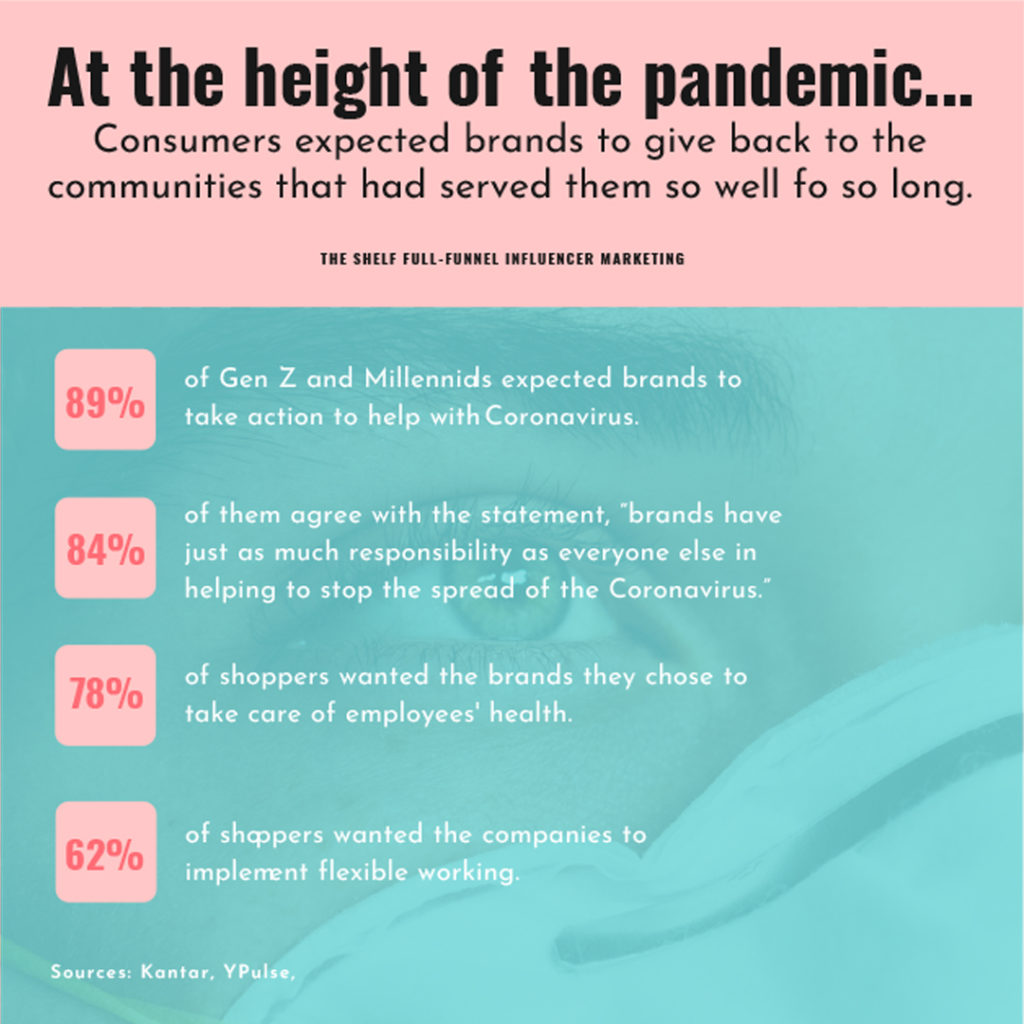
#11: Experiential marketing will be the new luxury experience.
Influencer-promoted and influencer-attended live events are a great way to boost visibility and create a host of loyal fans. Experiential marketing allows audiences who may be curious about a brand or product to interact with a brand in a real-world situation.
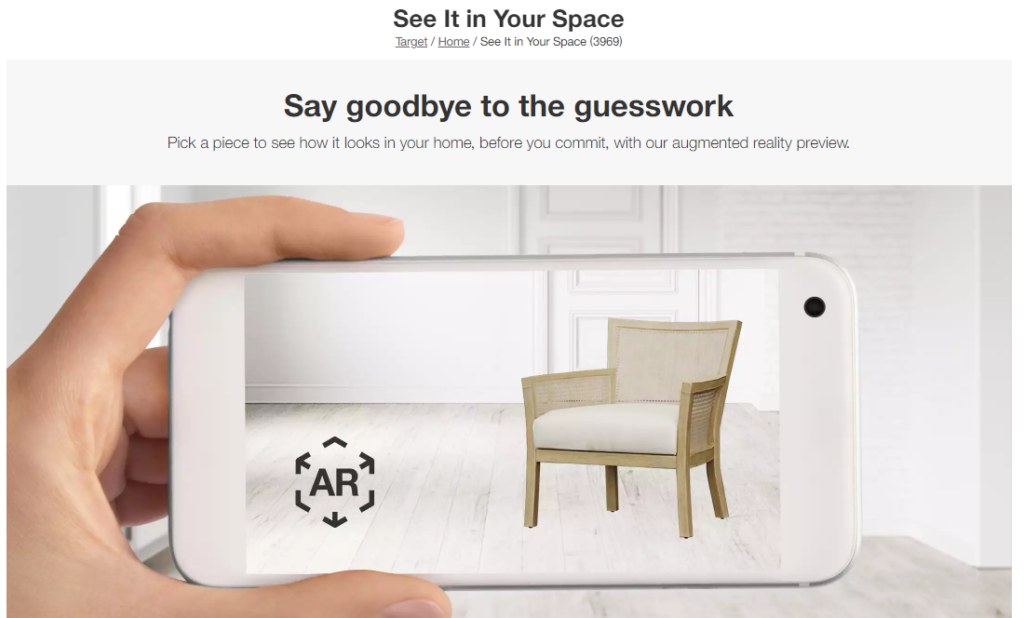
Experiential marketing (aka engagement marketing) now ranks as one of the top five marketing strategies brands are leveraging, according to HubSpot.
It takes many forms: Pop-ups, co-branding events (we did this with our client DXV by coordinating events with world-renowned design expert (and celeb influencer) Nate Berkus), product demos, product sampling, tours, conferences, classes/workshops, AR/VR, and even metaverse activations.
Think of Apple Stores – customers get plenty of time to interact with devices, play games, click through apps, and experience the value and utility of the devices. The result? They basically convince themselves that they NEED the phone, tablet, or computer.
#12: Nonprofits rely on social media platforms to drive donations.
Another really cool influencer marketing trend for 2023 is likely to be something most of us never really think about – social giving. But despite the global pandemic leading to an economic downturn, other events that happened in 2020 impacted donation trends in a positive way. If you spent any time on Instagram last year, you may have noticed all kinds of asks – micro-influencers encouraging their followers to patronize local businesses, socially aware real-life influencers sharing donation links to allow their followers to donate to legal funds to help arrested protestors, grocery stores asking customers to “round up” their purchases to support social programs.
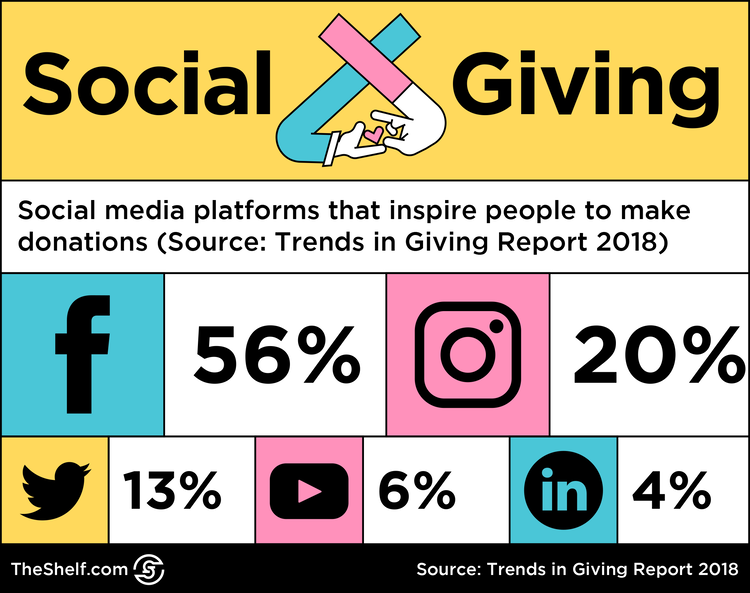
What many nonprofits got incontrovertible truth of last year is that creating a platform-based social movement can:
- boost brand awareness (and positively impact brand mentions)
- facilitate deeper connections with their audiences
- drive website traffic, and
- increase donations
Statistics show that there has been an increase in funds allocated to non-profit organizations, including those to aid in the COVID-19. Not only have more people donated, but those donors are also donating more money.
There is speculation that donation trends will drop again as things get better, but nonprofits can implement social media strategies and a click-focused influencer marketing strategy to mitigate this trend! Reaching out to new donors by partnering with internet celebrities, as well as nano and micro-influencers who are talented storytellers.
Organizations can recruit influencers who will help them remind donors just how helpful and impactful their donation was, and encourage them to donate again in the future.
#13: More and more and more and more collabs.
The writing has gone from being on the wall to this one to basically being in the app already. Apps are moving toward enabling multiple accounts to work together to reach audiences, share audiences, share engagement numbers. Instagram has rolled out a nice set of features to help brands amplify branded content through influencer collaborations that can be successfully promoted to targeted audiences as influencer collaborations.
So, we tapped our Strategy team to find out the latest from Instagram:
Collabs. Lets users co-author posts and Reels so that content can reach bigger, untapped audiences.
Add Yours. Allows users to add their own pictures to someone else’s Instagram Stories.
Instagram Reels Play Bonuses. Opportunities for creators to earn money directly from Facebook and Instagram for creating content that their communities love. Creators can make money based on the number of plays their Reel gets. The amount of money earned is based on the performance of the reel and the total number of reels produced.
You’ll select the Reels Play bonus from the Bonuses page and tag the reel within 24 hours. You’re then paid out on all Reels that receive at least 1,000 views over a 30-day period.
Branded Content Partnerships (being tested). This includes a new partnership message folder in the primary inbox, brands can filter through the creator’s details (using Instagram data), like their follower count, location, gender, and age range. Brands will be able to use data and unique filters to discover and select the best creators for their campaigns. Creators can add brands they’re interested in working with to a “preferred brands list.”
View this post on Instagram
#14: Familiar audio, music, and TV shows being used to connect with audiences.
We have never been so engrossed in music. No matter where we turn audio features are being added to social platforms like crazy. Advertisers are starting to look to streaming and trending audio clips to talk to their audiences. Between TikTok, Spotify, IG Reels, Twitter Spaces, Clubhouse, etc. there are tons of options for brands looking to loop audio platforms into their social media marketing strategies. And yeah… this is the way to go if you want to reach younger buyers. Quality content is all about connecting, right?
Spotify stepped into the viral audio world in a unique way. Seeing an opportunity to help connect advertisers with Spotify users and capitalize on their dedicated audience base, Spotify launched their “All Ears On You” campaign, a B2B campaign that – get this – uses neuroscience to help advertisers understand how to reach their target audiences BASED ON the type of audio content they’re consuming.
#BOOM
Burger King hopped on this audio trend recently with its “Questions” ad.
For those who don’t see the big deal (since it basically looks like a regular Burger King commercial), TikTok users will instantly recognize the song as “The Magic Bomb (Questions I Get Asked)” by Hoàng Read. The song’s super popular on TikTok.
Earlier this week, Snapchat announced a second partnership with NBC Universal to allow users to grab audio clips (famous quotes and theme music) from different NBC properties – we’re talking SNL, 40-Year-Old Virgin, Saved by the Bell, 30 Rock, The Office, Shrek, Despicable Me, Seinfeld, The Cosby Show, Friends… #RedRoss #WeWereOnABreak #Pivot
Earlier this year, Snapchat inked a similar deal with Universal to allow users access to the company’s massive library of music.
#15: A rise in ongoing partnerships between brands and influencers.
Influencer selection is such a pain in the neck for brands, and the nuances of influencer contracts will make it tougher to grab up influencers easily for campaigns. So, we expect to see a noticeable rise in ambassadorships and influencer partnerships that go beyond one-off sponsored posts.
Creating content is time-intensive for many brands. And while it’s easy-ish to get access to a content creator, finding one that can create value-driven content that resonates with the specific segment of your target audience you’re aiming to reach can make the effectiveness of brand sponsorships tough to quantify, and even hard to justify.
In order for sponsored posts to be considered quality content, brands have to partner with influencers who understand how to communicate value. We’re way past follower count here, right? Ongoing partnerships will allow brands to consistently work with influencers who have had huge success reaching a brand’s targeted audience segments.
#16: Quality video content – especially short-form video – will remain important as more social platforms expand to bigger screens.
Here’s a really cool influencer marketing trend still in its growth stage: We are seeing mobile apps pushing their way onto larger screens. This will inevitably impact your influencer marketing campaigns because it affects how content is created and shared. Plus, we think it’s going to increase the size of the audience that sees that content.
On the heels of Instagram making it easier for users to post content from their laptops and desktops, TikTok announced a partnership with Amazon Fire TV. Know what that means? the influencer content your creative partners make for TikTok will be watched on the biggest screen in the house.
As a medium, short-form video has the highest ROI of any social media marketing strategy. It’s also fantastic at drumming up engagement. According to the 2022 YouTube Culture & Trends Report, 59% of 18 to 24-year-olds use short-form video apps to discover things they then watch longer versions of.
Instagram, TikTok, and now YouTube are the go-to channels for boosting engagement and visibility with short-form video. Combine this with the longer versions of micro video content and it’s a bonafide win for food and makeup demonstrations!
#17: More social media protections for kids.
We penned a post on this a few years ago, back before Ryan Kaji and his brand of toys took over the homes of many parents of young kids.
But kids influence billions upon billions of dollars in spending. Just a few years ago, many parents retired from YouTube because the platform was slow to react when inappropriate content began showing up in videos meant for children.
Lately, the government’s been cracking down on Facebook and other social media platforms targeting underage users.
This is and should have a major impact on the influencer marketing trends as more and more platforms continue to take steps towards keeping our children safe online.
Instagram ended up halting work on a platform geared toward the under-18 crowd. YouTube (and YouTube now officially qualifies as a social media platform) has begun suppressing low-quality videos that are overly commercial or loaded with branded content designed to push kids into wanting stuff (think unboxing videos and in-store walk-throughs of the toy department).
A Final Word About Influencer Marketing Trends
Influencer marketing trends are ever-changing. Dude, these are just a few of the changes happening. Many of them have been announced just in the last few weeks. But as more and more social media platforms follow suit, they’ll end up being crucial to your influencer marketing efforts and all of your marketing campaigns in the coming year.
There are nuances to reaching your target audience and even more nuances to coming up with effective influencer marketing ideas. Partnering with the right influencers to share the right message at the right time has never been more popular. But to keep your social media marketing campaigns fresh and effective, it’s smart to keep up with the marketing trends that will shape branded content. Each weird, little influencer marketing trend cataloged has the potential to impact your influencer marketing pushes for 2023.
That said, one of the best things about influencer marketing is that content creators earn their keep by staying up to date on the latest influencer marketing trends. So, build out those long-term partnerships with influencers who can help you stay relevant.
To learn more about the latest influencer marketing trends and what you can do to get on board in 2023, schedule a strategy call today!
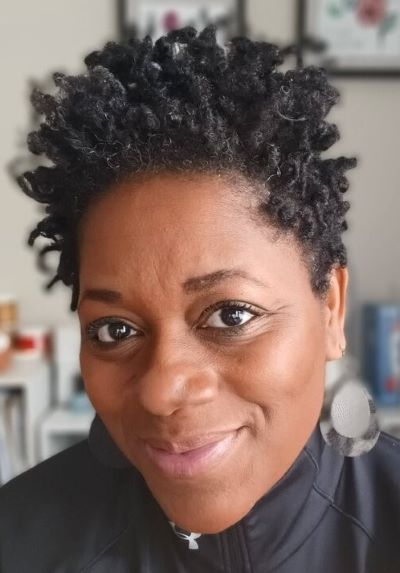
About This Author
Sorilbran Stone | Content Strategist
I serve as the resident content strategist and the official Head of Content Marketing at The Shelf. Marketing is my happy place. I’m as happy looking at analytics as I am actually creating a thing. I focus on dreaming up and implementing the best ways to create, publish, and distribute content that will build your brand and get your audience to do a thing.


